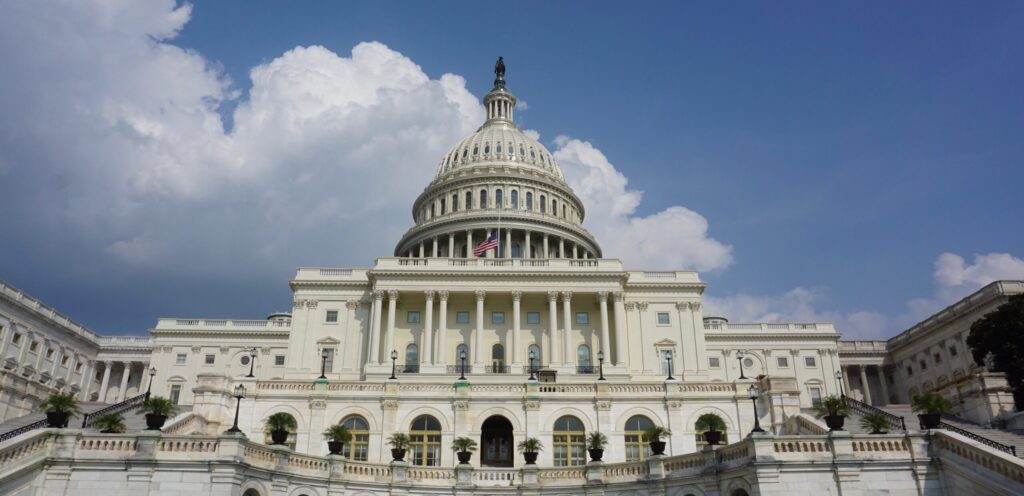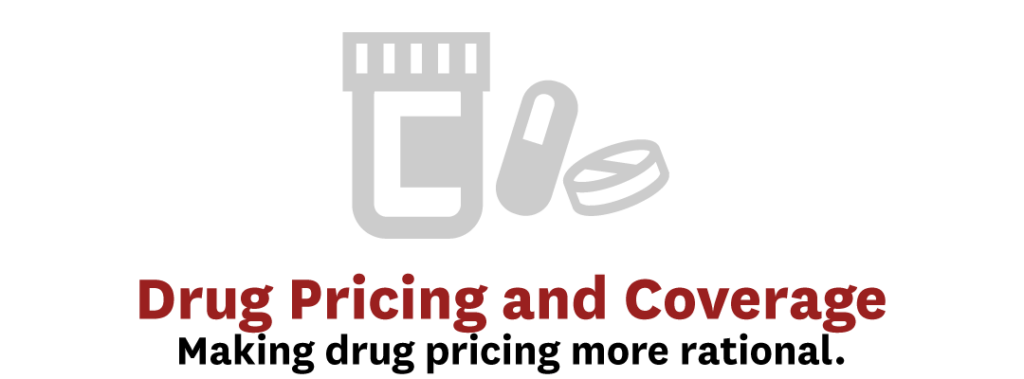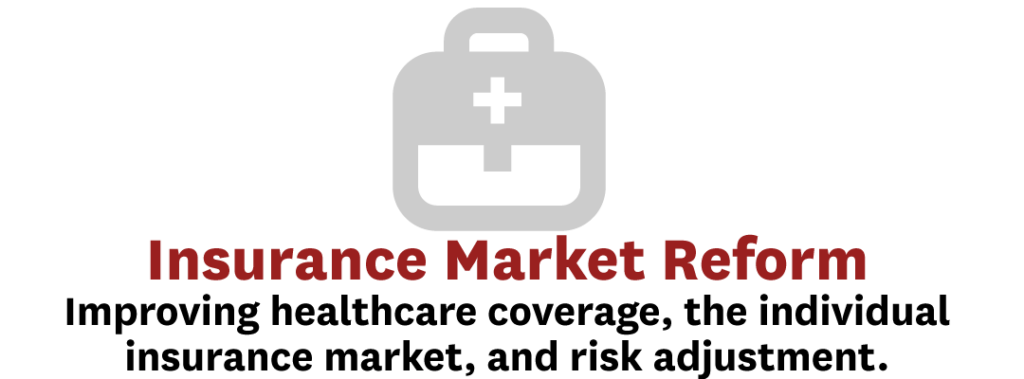Health Policy Recommendations for the Biden Administration and 117th U.S. Congress


From deploying a national vaccination campaign to managing treatment, hospital capacity, and federal resources, the pandemic is undoubtedly the top priority of the Biden Administration. But there are many other pressing policy issues for the new Administration and Congress to tackle in the months and years ahead.
The USC-Brookings Schaeffer Initiative for Health Policy — a partnership between Economic Studies at Brookings and the USC Schaeffer Center for Health Policy & Economics — has developed practical recommendations and analysis in a number of these critical areas.

Joint Recommendations of USC-Brookings Schaeffer Initiative for Health Policy and AEI Scholars to Reduce Healthcare Costs
In early 2019, the Senate Committee on Health, Education, Labor, and Pensions requested recommendations from health policy experts at the American Enterprise Institute (AEI) and the Brookings Institution regarding policies that could reduce healthcare costs. In this letter, experts from both institutions provide a series of recommendations, including improving incentives in private insurance and Medicare, removing regulatory barriers to provider market competition, and promoting competition in the pharmaceutical market. Many of these recommendations were incorporated into a bill reported by the Committee, although only the surprise billing recommendations were included in the No Surprises Act that was enacted at the end of December 2020. Read the comment letter.
A Proposal to Enhance Competition and Reform Bidding in Medicare Advantage
Medicare beneficiaries can receive coverage through “traditional” Medicare or by enrolling in a private Medicare Advantage (MA) plan. When enrolled in an MA plan, Medicare pays the plans a fixed monthly amount for each member, and MA plans assume full responsibility for providing all benefits. A third of Medicare beneficiaries are enrolled in MA plans, however, the structure of the bidding process is highly inefficient and expensive — leading to high plan bids, a complicated choice environment for consumers, and uneven subsidization based on location. In this report, researchers propose two key changes to the Medicare Advantage bidding process to lower prices and enhance choices for consumers. Read the white paper.
Making Health Care Markets Work
The United States healthcare system does not function as well as it could or should. The cost of care is high and rising while quality of care is uneven. Physician, hospital, and payer consolidation have all accelerated over the last decade, resulting in many markets dominated and controlled by one or a handful of powerful health systems or payers. These mergers and acquisitions have limited competition, leading to higher prices, lower-quality care, and reduced incentive for innovation. In this report from Schaeffer Initiative Director Paul Ginsburg and colleagues, a new “competition policy” is proposed that would engage multiple actors at the federal and state level to reduce anti-competitive practices and help independent physician practices remain financially viable. Read the report.

Test Payment Strategies
The Families First and Coronavirus Relief Act (FFCRA) established rules to make COVID-19 testing free to the patient. But gaps in the legislation left some patients unprotected. In this blog, Loren Adler and Christen Linke Young examine ambiguities and discuss how to improve upon existing laws and guidelines governing payment for COVID-19 testing. They analyze where current law falls short, including the billing of uninsured patients, incentives for inflated out-of-network test pricing, the gaps in diagnostic and non-diagnostic testing, and quality and capacity constraints. Read the blog post.

Health Technology Assessment in the U.S.
A Vision for the Future
Viable policy solutions to combat high and rising healthcare spending are often prioritized according to their anticipated ability to improve affordability or encourage innovation, without recognizing there are ways in which both goals can be achieved. Health technology assessment (HTA) is a tool that can provide critical input for decision-makers along both these dimensions. But in the U.S., payers rely almost exclusively on privately funded HTAs for guidance in determining coverage and negotiating prices. These assessments tend to focus on patent-protected healthcare technologies, often overlooking unpatented procedures and technologies. A new report authored by an advisory panel established by the USC Schaeffer Center for Health Policy & Economics and the Aspen Institute provides six recommendations on how HTA could be improved within the U.S healthcare system. Most ambitiously, the panel recommends establishing an HTA coordinating body that would be publicly funded – the Institute for Health Technology Assessment (IHTA). The IHTA would evaluate existing HTA data where it exists, identify gaps in knowledge, engage in data collection and management, and advance research methods. For health interventions that are poorly studied by existing literature, it would also provide funding for assessments. Recent policy proposals that call for pegging some drug prices to those of other countries implicitly acknowledge the contributions of HTAs that other countries develop. “Rather than looking to healthcare decisions made by countries with different preferences and healthcare systems, the U.S. should develop a solution that considers all areas of healthcare and meets the needs of a wide range of stakeholders and payers. Read the white paper.
Sharing Drug Rebates with Medicare Part D Patients
In Medicare Part D, the growing difference between the list price and the actual net price paid have increased drug costs for patients because cost-sharing tends to be based on list prices, diluting the value of their insurance and failing to provide as much financial protection. In a Health Affairs blog post from 2020, Steven Lieberman, Paul Ginsburg, and Erin Trish explain administrative modifications and legislative reforms that could help expand the sharing of rebates with patients, but stress the need for guardrails and layers of accountability to ensure a tangible reduction in cost-sharing. They recommend that legislation require an approximation of the drug’s rebate amount be credited to patients and offer solutions to share drug rebates and protect patients in the future. Read the blog post.
Who Pays in Medicare Part D? Giving Plans More Skin in the Game
Medicare Part D covers over 45 million beneficiaries and costs the federal government approximately $85 billion per year. Unlike other parts of Medicare, Part D is managed exclusively by private plans with regulatory oversight by the federal government. This design provides little incentives for private firms to limit costs, especially for high-cost beneficiaries. Part D plans are responsible for 34% of total prescription drug spending, however health insurers in the commercial market paid an average of 85% of total drug costs in 2016. In this NEJM Perspective, USC-Brookings Schaeffer Initiative fellows argue that policymakers should consider reforms to the Medicare Part D program to shift more risk to the insurer, instead of the federal government. Further, as U.S. policymakers debate proposals for reforming the prescription-drug marketplace, they should recognize the need to update the Medicare Part D benefit design to give the private plans, which largely administer it, more skin in the game. Read the perspective.
Medicare Payment for Physician-Administered (Part B) Drugs: The Interim Final Rule and a Better Way Forward
In late 2020, the Trump Administration issued an interim final rule that would have the Medicare program limit the amounts the program would reimburse providers for physician-administered drugs to amounts paid for these drugs in other advanced countries. Often referred to as “most favored nation” (MFN), the rule offers the potential to reduce program outlays substantially, but would compromise beneficiary access, especially for medicines used by Medicaid and commercial patients as well as seniors. The problem is that the policy reduces what Medicare pays without reducing the prices that manufacturers charge physicians; to avoid losing money, physicians would stop administering the drugs to Medicare patients when reimbursement is less than their cost of acquiring medicines. There are better ways to reduce what the program pays for these medicines through a combination of engaging market forces and, in situations in which competition is not possible, limiting the prices that can be charged. Read the blog post.

A Path to Universal Coverage
The Affordable Care Act cut the uninsured rate nearly in half, but about 10% of U.S. residents are uninsured today, and recent evidence reinforces the benefits that health coverage can provide in improving health and financial security. In the New England Journal of Medicine, Matthew Fiedler and colleagues detail a series of discrete policy actions that would each expand coverage, and that taken together would achieve universal coverage at a manageable fiscal cost with minimal disruption to Americans already insured. These recommendations are especially relevant in the current political moment. Read the perspective.
How to Boost Health Insurance Enrollment: Three Practical Steps That Merit Bipartisan Support
Health insurance is a difficult product to traverse in the best of times; in a pandemic, it becomes nearly impossible. A bipartisan collection of health policy experts, including Schaeffer Initiative Fellow Christen Linke Young, argue to implement changes to offer flexibility, simplified income rules, a federal structure to create state automatic enrollment systems, and federal funding for consumer assistance programs. These changes would help those who need and qualify for coverage to get and keep health insurance during the pandemic and the ongoing recession; lawmakers from both parties should find these efforts sensible and essential. Read the perspective.
How to Make Auto-Enrollment Work
The Affordable Care Act greatly increased the share of Americans with health insurance, but there are still 30 million people who remain uninsured. Half of this population is eligible for coverage through Medicaid/CHIP or are eligible to receive financial assistance to buy individual market coverage. In this report, Christen Linke Young details three approaches to make use of automatic enrollment to insure more people. The first option, akin to “true” auto-enrollment, would retroactively cover otherwise uninsured individuals when they accessed medical services in a “backstop plan” and charge income-related premiums at tax filing time. The second would focus on aggressive outreach at the time of tax filing to connect likely-eligible individuals to subsidized coverage and encourage enrollment. And the third would target specific populations at the time of coverage transitions, such as individuals newly claiming unemployment benefits. Read the report.

Regulating “Junk Insurance”
The Affordable Care Act made important changes to establish a regulatory structure to set minimum standards for health care coverage as a way to protect Americans from faulty coverage. “Junk insurance” plans can leave unknowing enrollees with disastrous financial circumstances. In addition, these non-compliant plans use their low premiums to “cherry pick” health consumers away from more regulated risk pools, which drives up costs for those who remain in the broader regulated market. In this white paper, Christen Linke Young examines different types of “junk insurance” and outlines policies that could help close regulatory gaps that will better protect those enrolling in health insurance in the future. Read the white paper.
Risk Adjustment in the Individual Market
In this comment letter, Matthew Fiedler and Timothy Layton provide recommendations to the Centers for Medicare and Medicaid Services (CMS) on the 2022 Notice of Benefit and Payment Parameters, examining several aspects of the proposed rule related to risk adjustment. The authors recommend that CMS withdraw its proposal to downweight people with serious health conditions when estimating risk adjustment model coefficients, arguing that this change would make risk adjustment less effective in mitigating adverse selection, thereby reducing the quality of the coverage available to consumers and threatening the market’s ability to support robust insurer competition. They also recommend that CMS eliminate the state option to reduce risk adjustment transfers by up to 50 percent, arguing that current risk adjustment transfers are, in fact, already too small. Read the comment letter.

Congress Should Replace Medicare’s Merit-Based Incentive Payment System
Congress passed the Medicare Access and CHIP Reauthorization Act in 2015, which modified Medicare physician payment with the goal of encouraging higher-value care. The law offers incentives to transition from fee-for-service payment towards advanced alternative payment models (APMs), while also aiming to reward clinicians who deliver high-value care while staying in fee-for-service via the Merit-Based Incentive Payment System (MIPS). In a 2018 piece on the Health Affairs blog, USC-Brookings Schaeffer Initiative experts outline concerns that MIPS has little potential to meaningfully improve patient care but does create substantial administrative burdens. Therefore, they argue that Congress should repeal MIPS and replace it with stronger incentives to participate in advanced APMs plus other targeted incentives. Read the blog post.
Creating All-Payer Claims Databases (APCDs)
All-Payer Claims Databases (APCDs) can play an important role in informing efforts to improve the health care system, but the current patchwork of state APCDs has serious limitations. In a piece published in October 2020, Matthew Fiedler and Christen Linke Young describe how creating a national APCD could overcome these obstacles, providing a comprehensive picture of our health care system that would help accelerate improvements in all areas of care—benefiting consumers, employers, researchers, and policymakers. They also describe ways federal policymakers could help improve state APCDs, including by removing federal limits on state APCDs’ ability to obtain data from employers, funding creation of new APCDs, and making it easier to combine data from multiple APCDs. Read the blog post. Read the white paper.
You must be logged in to post a comment.